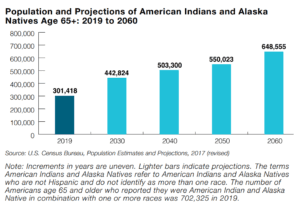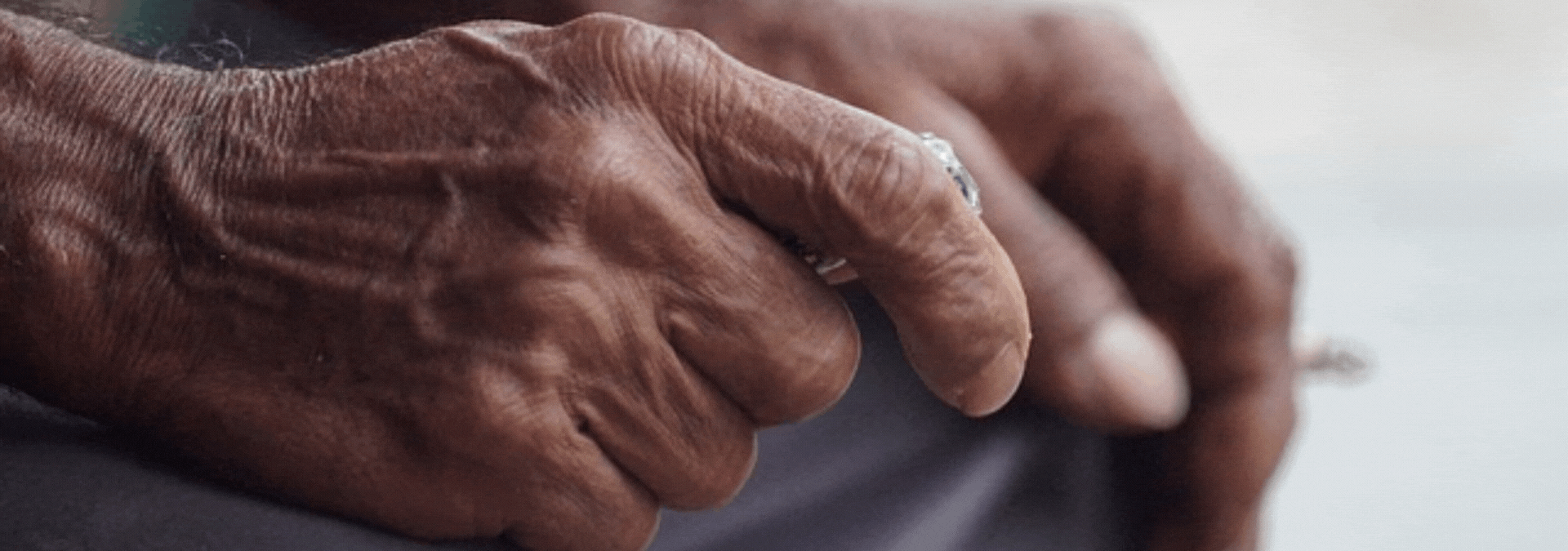Supported by a grant from the Administration for Community Living/Administration on Aging (ACL/AOA), the National Indian Council on Aging (NICOA) worked with ACL/AOA to create a comprehensive website on elder care services in Indian Country. By taking a continuum of care approach, NICOA sought to make the idea of long-term care something each tribal community could learn about, as well as find ways to make these services a reality for their elders.
This is why NICOA, in partnership with the National Resource Center on Native American Aging, the American Association of Retired Persons, the USAging and other key stakeholders, established a Continuum of Care National Resource Center, also known as the NICOA Compass: https://nicoacompass.org. The goal of this project is to empower tribal communities to develop or expand long-term care for American Indian and Alaska Native elders and persons with disabilities within their local communities.
What is continuum of care?
Continuum of care includes home and community-based services. An elder’s needs can range from education, fitness classes, transportation, dietary management, home modifications to allow a person to age at home, or even full-time skilled nursing facilities.
 Continuum of care addresses the needs of the whole person, and the interdependence of an elder’s life journey, including physical, mental, social, and spiritual well-being. A good plan for a tribe must be mindful of this entire range of needs.
Continuum of care addresses the needs of the whole person, and the interdependence of an elder’s life journey, including physical, mental, social, and spiritual well-being. A good plan for a tribe must be mindful of this entire range of needs.
Continuum of care is wellness. As projected by the ACL, the need for long-term care will grow as the Native elder population will double in the next 40 years. Native elders have a higher rate of disabilities than other elders aged 65 and older. In 2019, 47 percent of Native elders had one or more disabilities compared with 33.5 percent of all elders aged 65 and older.
Continuum of care promotes independence, healthy living, and quality of life. Continuum of care is person-centered and tailored to an individual’s needs over an extended period, including:
- Health aides
- Personal care
- Hospice care
- Nursing care
- Legal services
- Adult daycare
- Transportation
- Assisted living
- Case management
- Disease prevention
- Dietary management
- Mental health services
- Homemaker/chore services
- Meals congregate or delivered
 NICOA Compass: A Guide to Native Wellness
NICOA Compass: A Guide to Native Wellness
The audience for this website is both elders seeking information about continuum of care and tribal leaders who may be interested in finding ways to make the services available in a cost-effective way. The website contains a wealth of information on how to begin planning for long-term care, ways to pay for these services and supports, resources and advice for caregivers, an interactive map and searchable state directory for finding services, including Indian Health Service hospitals, tribal clinics, and urban health care facilities.
For tribal communities, getting access to healthcare can be difficult, particularly culturally sensitive, person-centered care that addresses local service provision preferences. Our national directory includes many states and is continuing to grow. It includes expanded local home and community-based services for elders and persons with disabilities, as well as service providers.
In the “Find Services” section, visitors will find a searchable directory to essential continuum of care resources by state and county with maps to pinpoint the nearest services in their area. The “For Tribal Leaders” section is where tribal leaders can learn how continuum of care fits into their communities. The page provides instructions on how to implement continuum of care systems, fund continuum of care, develop policies, and more.
The “For the Community” section is for tribal members seeking tools to care for the elders in their community. Visitors will find an advocacy toolkit, information on aging in place, a caregiver’s corner, and advice on how to plan for long-term care for yourself and others. Tribal continuum of care programs typically use a variety of revenue sources to create sustainable long-term care programs. The “Paying for Your Care” section covers Medicaid, Medicare, the Indian Health Service and other revenue sources.
In NICOA’s aim to make the subject of continuum of care more accessible, we surveyed tribal leaders and others interested in long-term care, asking which issues mattered to them the most. Based on this survey, we developed digital navigation outreach with recorded webinars on the top three subjects: assisted living, home health care, and program management.
We have additional videos which provide insight into the challenges and joys of caregiving for an elder, the story of an elder who found health and happiness through daily cycling, and a third currently in development to provide a framework for the concept of continuum of care (courtesy of nDigiDreams).
